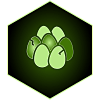Career Guidance for Children who want to work with Animals
- Home
- Courses Directory
- General
- Preparing for Animal Handling
Curriculum
- 1 Section
- 2 Lessons
- Lifetime
- Preparing to handle animals2
Manatee Facts and Taxonomy

Lesson 2
Manatee Etymology
Definitions
Etymology is the study of the origin of words and the way in which their meanings have changed throughout history

Origin of the Word
Manatees have a large, rounded body that is typically gray or brown in color. They have a flexible upper lip that they use to grasp and pull off Aquatic plants, and their front flippers have sharp claws that they use to scrape algae off of rocks and other surfaces.
Together with the Dugong they are also called sea cows.
The name manatee comes from the Taíno (a pre-Columbian people of the Caribbean) word manatí, meaning “breast.”
Word in other Languages
- Afrikaans = manatee
- Arabic = خروف البحر (kharuf albahr)
- Chinese = 海牛 (Hǎiniú)
- French = lamantin
- German = Seekuh
- Hebrew = פרת ים
- Russian = ламантин (lamantin)
- Spanish = manatí
Manatee Basic Facts

Average Length
4.0 metres (13 ft 1 in)

Average Weight
590 kilograms (1,300 lb)

Habitat
Shallow, coastal waters of the Caribbean, Gulf of Mexico, and parts of South America

Lifespan
up to 60 years in the wild

Offspring
1 calve

Gestation
360 days

Speed
24 km/h (15 mph)

Resting Heart Rate
50 to 60 beats per minut

Estimated Global Population
Around 13,000

Activity Period
Diurnal

Main Diet
Seagrasses and other aquatic plants

Conservation Status
Threatened
Frequently Asked Questions about the Manatee
Manatees are herbivores and primarily feed on aquatic plants, including seagrasses, mangroves, and algae. They are known to eat up to 10% of their body weight in plants each day.
Yes, manatees are considered threatened in many parts of their range due to a variety of threats, including habitat loss, boat strikes, and pollution. They are protected by law in many countries, but they continue to face significant threats to their survival.
There are several animals large ebough to eat them, such as sharks and alligators, but since they don’t usually inhabit the same waters, this is pretty rare. Their biggest threat is from humans.
Manatee Taxonomy

Kingdom: Animalia
Phylum: Chordata
Class: Mammalia
Order: Sirenia
Family: Trichechidae
Genus: Trichechus
Species: 3
Classification & Species
Scientific Classification
All living specis are classified from the broader groups down to the individual species. In this way the manatee is classified as an animal (animalia) with a backbone or vertebrae (chordata). It is further classified as a mammal (mammalia).
The manatee is classified as an animal (animalia) with a backbone or vertebrae (chordata). It is further classified as a mammal (mammalia).
AAs it is seen as a fully aquatic mammal with a herbivorous diet, it is placed within the Sirenia Order. It share the Order with the Dugong.
To seperate it from the dugong, it is placed in its own Family, called the Trichechidae. There is only one Genus within this Family.
Species
There are three accepted manatee species:
- Amazonian manatee – Trichechus inunguis
- West Indian manatee – Trichechus manatus
- West African manatee – Trichechus senegalensis

END OF COURSE
That’s it!
Remember that this Course forms a part of a larger series, so don’t forget to check on the others!
You can now always come back to this Lesson and use the information as a reference, or just to check up on facts.
REMEMBER:
Click this “COMPLETE” button when you have finished this LESSON, otherwise it will not register as completed.
THEN
After the Lesson reloads. click on the “COMPLETE COURSE” button on the right to finish the Course, and earn the rewards!


